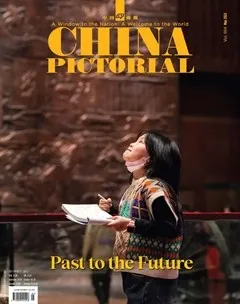Writing History for the Nation
by Yin Xing
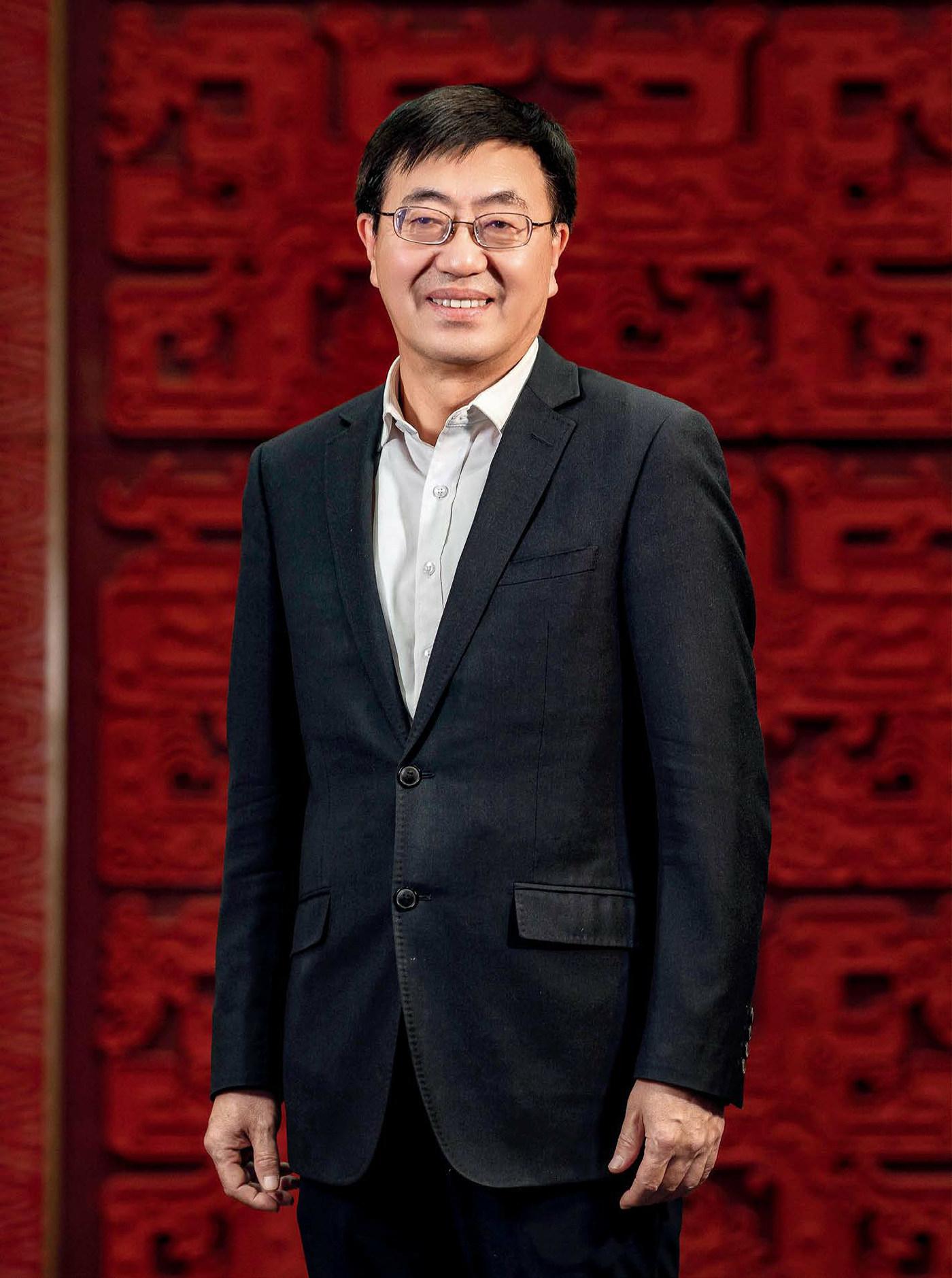
History is a mirror. It can help us understand the present and learn from the past to become wise. Recognizing the importance of history, studying it, and learning from it remains a fine tradition of the Chinese nation.
On the northern extension of Beijings Central Axis is a magnificent building resembling a ding (bronze tripod). The structure houses the Chinese Academy of History, where we interviewed Li Guoqiang, vice president of the institution, about the original intentions and mission of the academy as well as hopes for its future development.
Learning from the Past
The Liangzhu ruins testify to the social and economic development and class differentiation in the lower reaches of the Yangtze River in ancient China more than 5,000 years ago and provide concrete evidence of Chinas 5,000-year history of civilization. Wooden slips sent by Qin soldiers Heifu and Jing to their families unearthed from the No. 4 tomb of the Qin Dynasty (221-207 B.C.) in Shuihudi of Yunmeng County, Hubei Province, are the earliest family letters discovered in China to date. In those war-torn years, family letters were worth a fortune. The underground palace of Famen Temple allows a return to the heydays of the Tang Dynasty (618-907) to feel the ingenuity of its craftsmen. Known history provides not only a glimpse of the grand narrative of the succession of dynasties in ancient China, but also tiny but vivid details about individual lives. “The social functions of history, to put it simply, are two-fold: one is to study the origins of humanity, and the other is to apply it to the world to serve the present,” said Li Guoqiang.
Thanks to continuous development of archaeology and enrichment of historical materials around the world, one goal of the Chinese Academy of History is to use the Chinese historical perspective to better explain the history of Chinese civilization and even the history of human civilization. “Our project to trace the origins of Chinese civilization broke down the Western benchmark of ‘three elements of civilization (writing, metallurgy, and cities), and introduced Chinese criteria for determining a civilized society—the emergence of cities, classes, monarchy, and state,” said Li. “It has delivered original research on the origins of human civilization. It also ultimately proved with solid archaeological materials and comprehensive research that the 5,000-year-old history of Chinese civilization is authentic and credible.”
“Many far-reaching theoretical schools of history are debated around the world,”noted Li. “Establishment of the academy aims to unite and consolidate historical research forces throughout the country and inspire the formation of a school of historical studies that reflects the Chinese spirit, thoughts, and values.” He suggested that the academy intends not only to become a comprehensive national research center for Chinese history but also to develop into an international academic exchange center for Chinese history research as well as the most authoritative and influential Chinese history research institution in the world.
Civilization Interpretation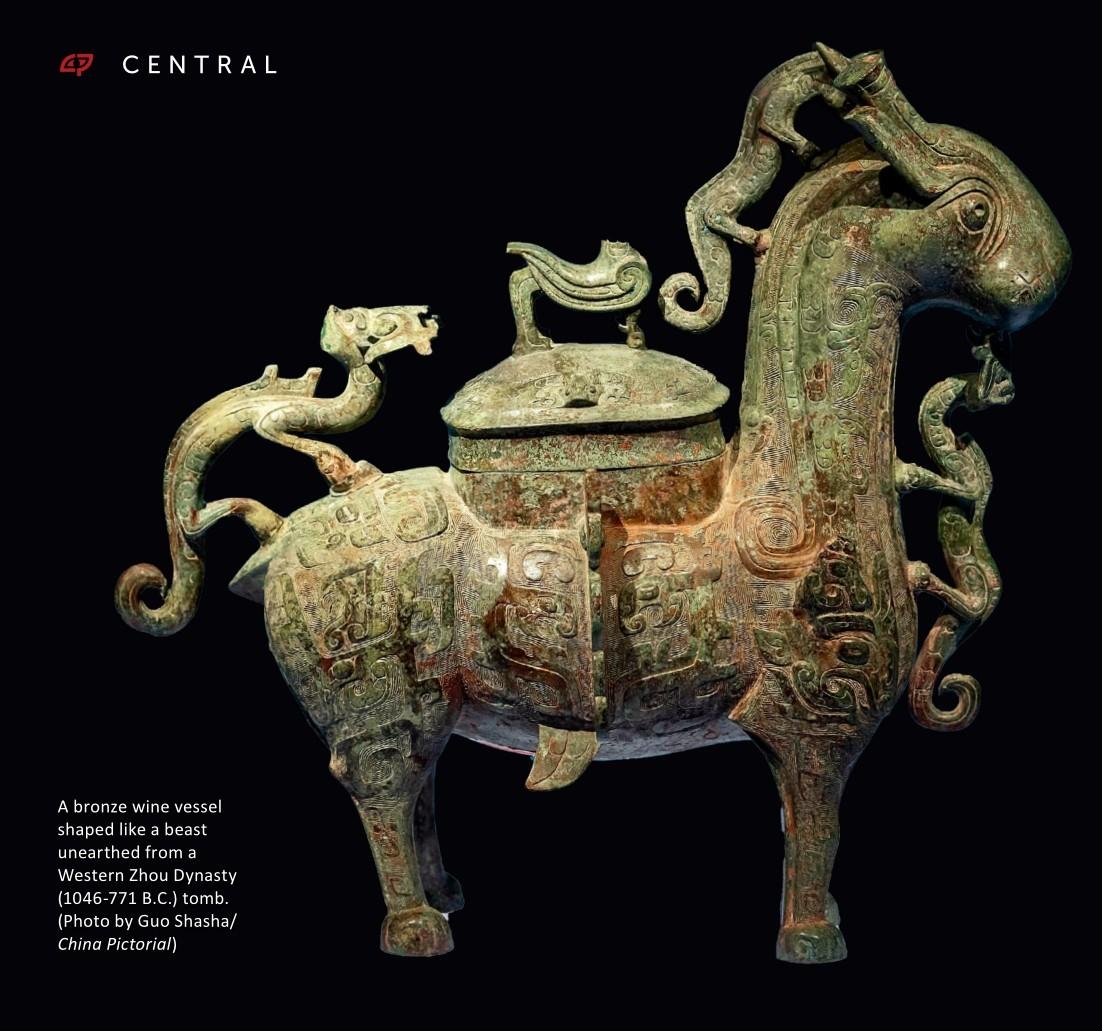
In the course of historical evolution, the Chinese nation has continued to thrive and pass on a legacy along its own path, cultivating and developing profound Chinese civilization with five outstanding characteristics: continuity, innovation, unity, inclusiveness, and peace.
The Qinghai section of the ancient Silk Road crosses a stretch of the vast Gobi Desert. While cleaning a tomb, archaeologists accidentally discovered a long-sealed secret compartment at the bottom of the tomb wall. In a wooden box inside the secret compartment was a gilded crown with pearl tassels and dragon, phoenix, and lion patterns as well as a gold cup with a handle inlaid with turquoise. “In terms of both shape and pattern, they inherited the style of Central Plains culture coupled with heavy cultural characteristics of the Qinghai-Tibet Plateau and even Central Asian cultural elements, a fusion of Chinese and foreign cultures,”Li explained. “Not just these cultural relics, but the entire concept of the ancient Silk Road, fully reflects the inclusiveness of Chinese civilization.”
Over the past five years, the Chinese Academy of History has published a series of historical works including A Brief History of Chinese Civilization, Outline of Chinese General History (new edition), and Stories behind Chinese Cultural Relics.“Each item introduced in the book Stories behind Chinese Cultural Relics exhibits the five distinctive features of Chinese civilization. The ivory cup unearthed from Queen Fu Haos tomb in central China has a lot of southern elements which reflect the inclusiveness fostered by convergence of multiple cultures; the bronze vessel Hezun (a bronze grain measure) from the Western Zhou Dynasty (1046-771 B.C.), with the characters for ‘Chinacast on it, vividly evidences the unity of the Chinese nation with diverse cultures; the brocade arm guard unearthed in Xinjiang is considered a gift from the Han Dynasty(202 B.C.-220 A.D.) to the ancient kingdom of Jingjue and is a representative cultural relic symbolizing peace,” Li continued.
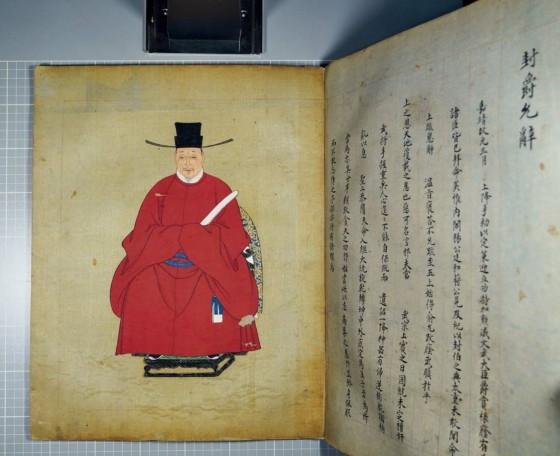
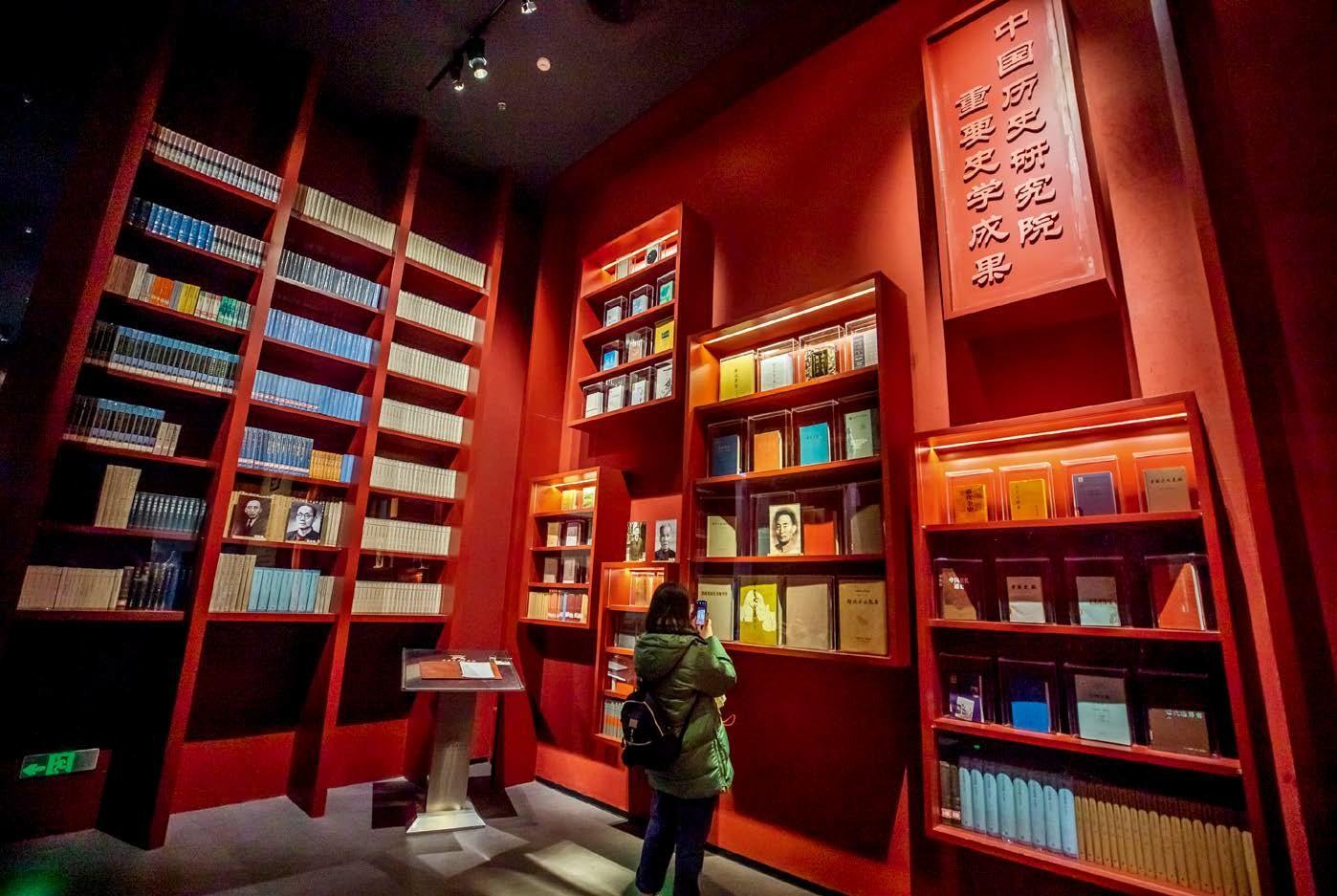
Over the past five years, the Chinese Academy of History has devoted great efforts to strengthening international exchange on Chinese historical research. In addition to establishing academic exchange mechanisms with historical research institutions in countries such as Russia and South Korea and receiving visiting representatives from domestic and foreign historical research institutions, the academy has continued to carry out joint archaeological work with countries such as Honduras, Egypt, Romania, and Uzbekistan to establish long-term cooperation mechanisms. “Archaeological cooperation between China and Honduras even preceded establishment of diplomatic relations between the two countries,” remarked Li. “The Chinese archaeological team brought not only Chinese technology, but also Chinese ideas: There is no such thing as a superior or inferior civilization, and we should jointly advocate respect for the diversity of world civilizations.”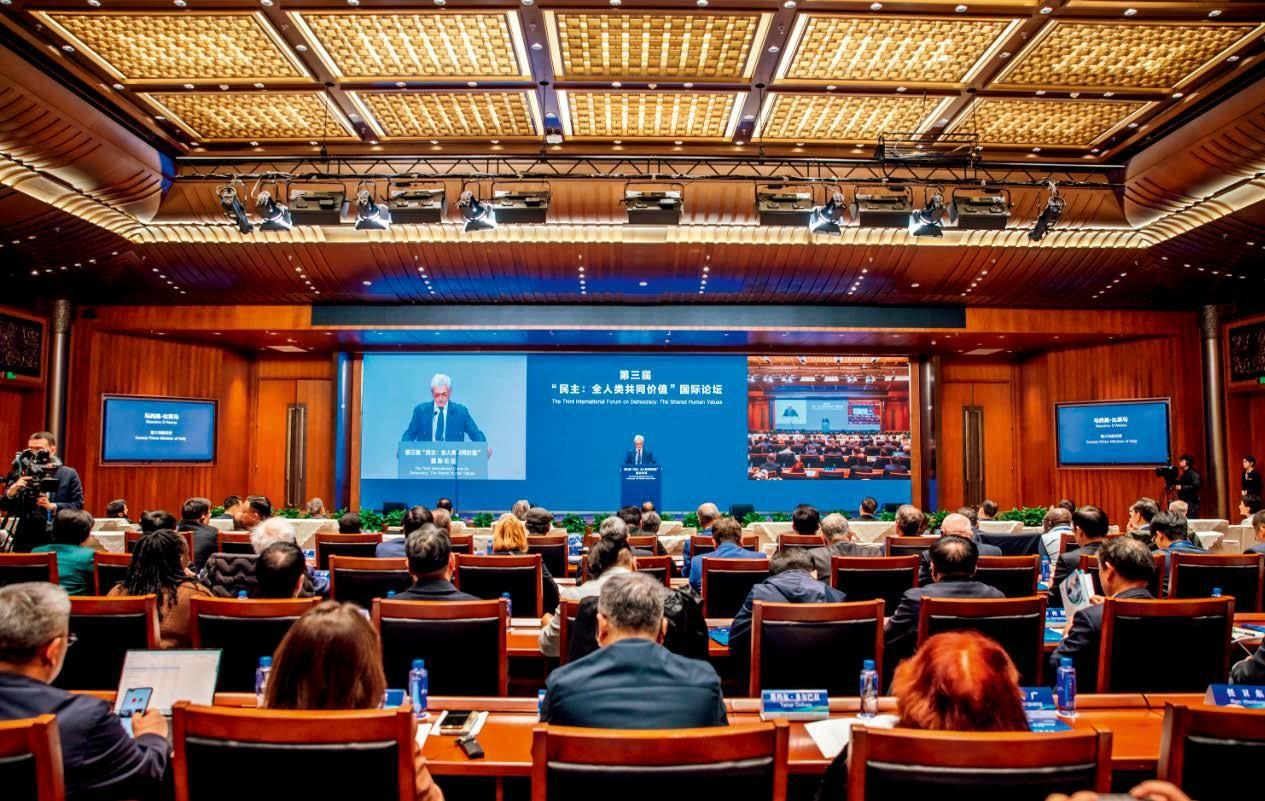
The 5,000-year-old history of Chinese civilization deserves to be seen and heard. To enable the general public to access and understand more historical research findings, the academy launched the “Lantai Lecture”(Lantai was the place where historians worked during the Han Dynasty), encouraged pundits to write books targeting mainstream readers, published popular historical readings such as Stories behind Chinese Cultural Relics and A Brief History of the World, and participated in production of historical and cultural TV programs such as “China in Classics” and “China Archaeology Conference”to creatively showcase the long-standing civilization and profound philosophical thinking of the Chinese nation and nudge the latest historical research findings in the new era closer to the people.

